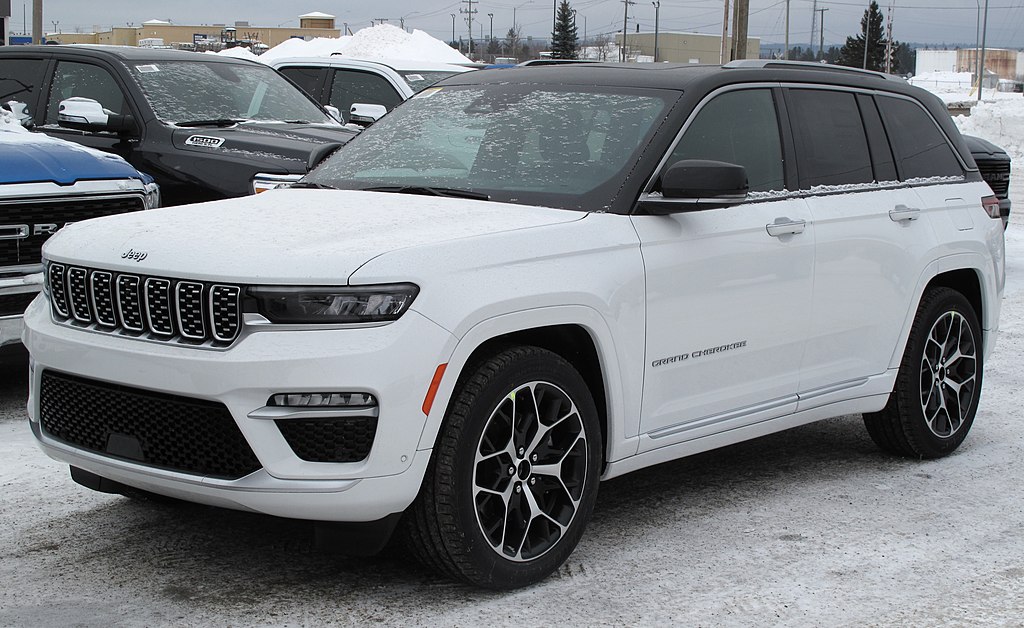Luxury SUV Deals: How to Find Real Value on Premium Models
Luxury SUV deals can be genuinely advantageous—if you know how to interpret incentives, compare trims, and evaluate the total cost of ownership. Whether you’re browsing local services in your area, weighing lease versus finance, or considering certified pre-owned (CPO), the best offers balance upfront savings with long-term value. This guide breaks down how luxury SUV deals really work, how to spot a strong offer, and what pricing ranges look like across popular models.

What counts as a luxury SUV deal?
A true deal aligns with your needs, not just a low monthly payment. Start with the basics: manufacturer incentives (cash rebates, lease credits), dealer discounts, and special APRs for well‑qualified buyers. Seasonal inventory shifts can lead to extra flexibility, especially when a new model year or refresh is arriving. CPO programs extend warranty coverage and can include special rates, often making them high-value alternatives to new models.
Remember that trims, packages, and powertrains change the baseline. A well-equipped mid-trim may outperform a base model with fewer features, even if the sticker is similar. And while performance variants are tempting, they typically carry higher insurance, maintenance, and depreciation costs.
How to evaluate a deal beyond the sticker
Look past the headline price. For leases, ask for the money factor (interest), residual value, and all fees (acquisition, disposition, documentation). A great discount paired with a high money factor can negate savings. For financing, compare APRs from multiple sources (dealers, banks, credit unions), then calculate total interest over the loan term.
Consider total cost of ownership (TCO): insurance rates, maintenance plans, brake and tire costs (often higher on performance SUVs), fuel or electricity costs (for PHEV/EV), and depreciation. Some brands include scheduled maintenance for a period; others sell prepaid maintenance plans. If you plan to keep the vehicle beyond the warranty, extended coverage pricing and reliability records matter.
Why does “bulk_create_keyword” appear in some posts?
If you’ve ever seen the term bulk_create_keyword in automotive or marketing articles, it’s usually a content-management placeholder that wasn’t replaced before publishing. It should never appear as live copy. In the context of researching luxury SUV deals, focus instead on concrete terms—MSRP, APR, residual value, destination charges, and out‑the‑door pricing. If a page includes placeholder text, treat it as a red flag and verify details with the dealer or manufacturer directly.
Negotiation tips that work in your area
-
Request an itemized, out‑the‑door quote from multiple dealers in your area, including all taxes and fees.
-
Ask how national and regional incentives stack with dealer discounts; not all offers combine.
-
Get preapproved with a bank or credit union to benchmark the dealer’s finance offer.
-
For leases, negotiate price (cap cost) first, then confirm money factor, residual, and mileage allowance.
-
If you have a trade-in, obtain independent offers to avoid undervaluation.
-
Test trims back-to-back. Sometimes a slightly different configuration qualifies for better programs.
Price ranges and real-world comparisons
Below are widely observed ranges for popular luxury SUVs. These are not quotes; rather, they reflect common MSRP starting points and the kinds of advertised lease ranges you may encounter for well‑qualified customers. Local availability, credit tier, taxes, fees, and incentives will meaningfully change your numbers.
| Product/Service | Provider | Cost Estimation |
|---|---|---|
| BMW X5 (midsize luxury SUV) | BMW USA | Typical starting MSRP: mid-$60,000s and up; widely advertised leases often around $700–$1,200/mo depending on trim, drive-off, and credit. |
| Mercedes-Benz GLE | Mercedes-Benz USA | Typical starting MSRP: mid-$60,000s and up; advertised lease examples commonly in the ~$750–$1,250/mo range with qualifying terms. |
| Lexus RX 350 | Lexus | Typical starting MSRP: mid-$40,000s to $60,000+; advertised leases often ~$550–$900/mo depending on options and structure. |
| Audi Q7 | Audi of America | Typical starting MSRP: low-to-mid $60,000s and up; advertised lease ranges frequently ~$700–$1,150/mo based on configuration and due-at-signing. |
| Volvo XC90 | Volvo Cars | Typical starting MSRP: low $60,000s and up; advertised lease ranges often ~$650–$1,050/mo depending on trim and incentives. |
| Range Rover Velar | Land Rover | Typical starting MSRP: mid-$60,000s and up; advertised leases frequently ~$800–$1,300+/mo with credit and drive-off variability. |
Prices, rates, or cost estimates mentioned in this article are based on the latest available information but may change over time. Independent research is advised before making financial decisions.
These ranges reflect common publicized examples and should be cross-checked with current manufacturer programs, local inventory, and your personal credit profile. In many cases, larger upfront payments lower the monthly figure but don’t reduce overall cost meaningfully—run the full math before deciding.
Lease vs. buy: which makes sense for premium SUVs?
Leasing can shine for luxury buyers who like new tech, care about warranty coverage, and prioritize a predictable monthly payment. You’re paying for the portion of the vehicle you use, which helps offset higher MSRPs. Strong residuals (common with certain luxury brands) can further improve lease economics. Buying suits longer ownership horizons, higher annual mileage, and those who want to avoid mileage limits or wear-and-tear charges. If you buy, favor models with robust value-retention and consider certified pre-owned to reduce depreciation exposure.
Common pitfalls that inflate costs
-
Focusing only on monthly payments without reviewing the term length, money factor/APR, and total paid.
-
Overlooking add-ons bundled into deals (etching, nitrogen, paint protection) that you may not need.
-
Ignoring insurance quotes; some trims and engines carry substantially higher premiums.
-
Skipping a pre-purchase inspection on used/CPO vehicles for a second set of eyes.
-
Not verifying whether maintenance is included or extra—and what it covers.
Finding deals through local services
Strong deals often come from efficient shopping. Use local services in your area—regional dealer networks, car-buying concierge services, and independent brokers—to request competing quotes. Many credit unions publish auto rates and sometimes offer member discounts with partnered dealers. Online marketplaces can surface incentives and show how pricing trends shift across trims and colors. Always confirm that destination charges, dealer fees, and taxes are included in your written out‑the‑door quote.
Conclusion
The best luxury SUV deals pair realistic pricing with the right configuration, favorable financing or lease terms, and a clear view of total ownership costs. By comparing multiple offers in your area, understanding incentives, validating all fees, and avoiding placeholder or unclear information (like the term bulk_create_keyword), you can secure a premium model that feels like a smart decision long after you drive it home.






